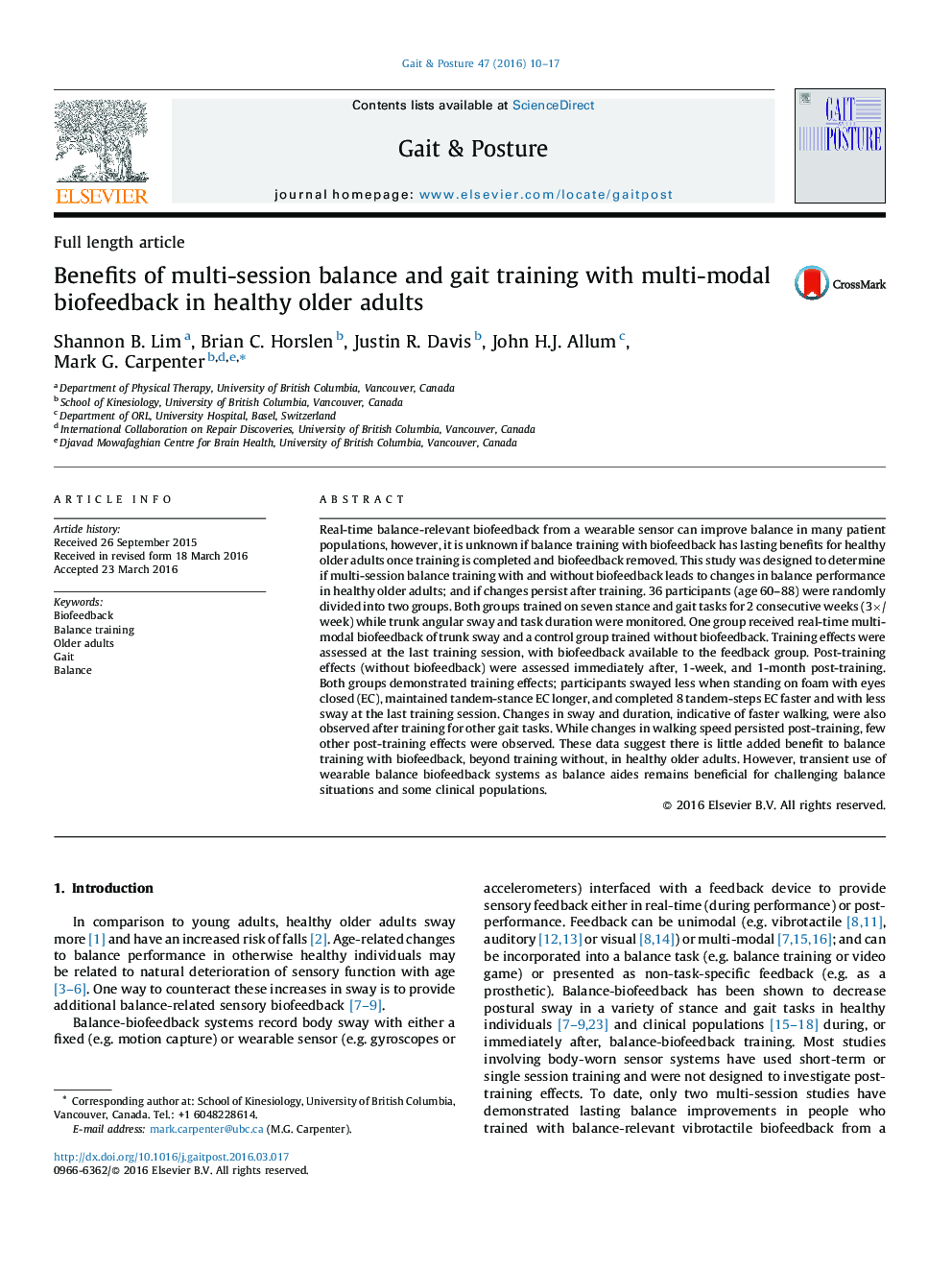| Article ID | Journal | Published Year | Pages | File Type |
|---|---|---|---|---|
| 6205873 | Gait & Posture | 2016 | 8 Pages |
â¢Six sessions of balance training alone can improve stance and gait performance.â¢Balance training can enable increased gait speed with minimal change in trunk sway.â¢Training with biofeedback is most beneficial for the most difficult tasks.â¢There are few long-term benefits for biofeedback training in healthy older adults.â¢Biofeedback likely benefits more as a sensory prosthetic aid for those with sensory deficits.
Real-time balance-relevant biofeedback from a wearable sensor can improve balance in many patient populations, however, it is unknown if balance training with biofeedback has lasting benefits for healthy older adults once training is completed and biofeedback removed. This study was designed to determine if multi-session balance training with and without biofeedback leads to changes in balance performance in healthy older adults; and if changes persist after training. 36 participants (age 60-88) were randomly divided into two groups. Both groups trained on seven stance and gait tasks for 2 consecutive weeks (3Ã/week) while trunk angular sway and task duration were monitored. One group received real-time multi-modal biofeedback of trunk sway and a control group trained without biofeedback. Training effects were assessed at the last training session, with biofeedback available to the feedback group. Post-training effects (without biofeedback) were assessed immediately after, 1-week, and 1-month post-training. Both groups demonstrated training effects; participants swayed less when standing on foam with eyes closed (EC), maintained tandem-stance EC longer, and completed 8 tandem-steps EC faster and with less sway at the last training session. Changes in sway and duration, indicative of faster walking, were also observed after training for other gait tasks. While changes in walking speed persisted post-training, few other post-training effects were observed. These data suggest there is little added benefit to balance training with biofeedback, beyond training without, in healthy older adults. However, transient use of wearable balance biofeedback systems as balance aides remains beneficial for challenging balance situations and some clinical populations.
